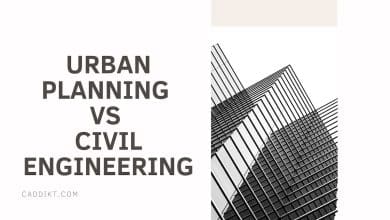In the field of civil engineering, structural design plays a pivotal role in creating safe and efficient structures that withstand various loads and environmental conditions. Structural design involves the analysis, planning, and execution of buildings, bridges, dams, towers, and other infrastructure projects. This article delves into the fundamentals of structural design, its importance, and the key considerations involved in the process.
Understanding Structural Design
Structural design refers to the process of determining the appropriate configuration, materials, and dimensions for a structure to fulfill its intended purpose while ensuring stability, strength, and durability. It involves applying engineering principles and mathematical calculations to design structures capable of withstanding loads such as gravity, wind, seismic forces, and temperature variations.
The primary objective of structural design is to create a safe and reliable structure that can support the desired loads over its intended lifespan. This requires careful consideration of various factors, including the type of structure, site conditions, materials, construction methods, and applicable building codes and regulations.
Importance of Structural Design
The importance of structural design in civil engineering cannot be overstated. A well-designed structure not only ensures the safety of occupants but also optimizes the efficient use of materials, minimizes construction costs, and reduces the risk of failure or damage. It forms the backbone of any construction project and influences its functionality, longevity, and aesthetics.
Without proper structural design, buildings and infrastructure would be susceptible to collapses, deformation, or excessive vibrations. By conducting thorough analysis and design calculations, civil engineers can determine the appropriate structural members, connections, and reinforcement required to withstand anticipated loads and environmental conditions.
Key Considerations in Structural Design
1. Structural Analysis and Modeling
Structural analysis involves evaluating the behavior of a structure under various loads using mathematical models and computer simulations. This process helps engineers understand how different elements and materials interact, enabling them to make informed design decisions. Advanced software tools are often employed to model and analyze complex structural systems accurately.
2. Material Selection
Choosing the right materials is crucial in structural design. Factors such as strength, durability, cost, availability, and environmental impact need to be considered. Common structural materials include steel, concrete, timber, and composite materials. Each material possesses unique properties that influence its suitability for specific applications.
3. Load Calculation
Accurate load calculation is essential to ensure the structural integrity of a design. Various types of loads, including dead loads (e.g., the weight of the structure itself), live loads (e.g., occupants and movable objects), and environmental loads (e.g., wind, snow, earthquakes), must be taken into account. Civil engineers use building codes and standards to determine the appropriate load combinations for different situations.
4. Safety and Building Codes
Safety is paramount in structural design. Engineers must adhere to local building codes and regulations to ensure that the structure meets the necessary safety standards. These codes provide guidelines on factors such as minimum strength requirements, fire resistance, structural stability, and accessibility.
5. Structural Systems
Structural systems refer to the arrangement and interaction of structural elements within a design. Common structural systems include frames, trusses, arches, shells, and cable structures. The choice of a structural system depends on factors such as span length, architectural considerations, construction method, and load requirements.
6. Construction Methods
Structural design must take into account the construction methods and techniques that will be employed. Factors such as site access, labor requirements, construction sequence, and equipment availability influence the design. Efficient coordination between the structural design team and the construction team is essential to ensure the smooth execution of the project.
7. Sustainability and Environmental Considerations
In recent years, there has been an increasing emphasis on sustainability in structural design. Engineers are incorporating environmentally conscious practices into their designs to minimize the environmental impact of structures. This includes using sustainable materials, optimizing energy efficiency, implementing green building techniques, and considering the life cycle assessment of the structure.
8. Structural Stability and Resilience
Structural stability and resilience are crucial aspects of design, particularly in areas prone to natural disasters. Engineers must account for the potential effects of earthquakes, hurricanes, and other extreme events to ensure that structures can withstand and recover from such occurrences. Designing for resilience involves incorporating redundancy, robustness, and adaptive strategies to enhance the structure’s ability to resist and recover from adverse conditions.
9. Maintenance and Serviceability
Structural design should also consider ease of maintenance and serviceability. This includes providing access for inspections, repairs, and upgrades over the lifespan of the structure. Designing with serviceability in mind ensures that the structure can be effectively maintained, minimizing disruptions and extending its operational life.
Conclusion
Structural design is a critical aspect of civil engineering, encompassing the analysis, planning, and execution of safe and efficient structures. Through careful consideration of factors such as materials, loads, safety codes, sustainability, and construction methods, engineers can create structures that meet functional requirements while ensuring durability, stability, and resilience. By continuously advancing the field of structural design, civil engineers contribute to the development of innovative and sustainable infrastructure that shapes the world we live in.








